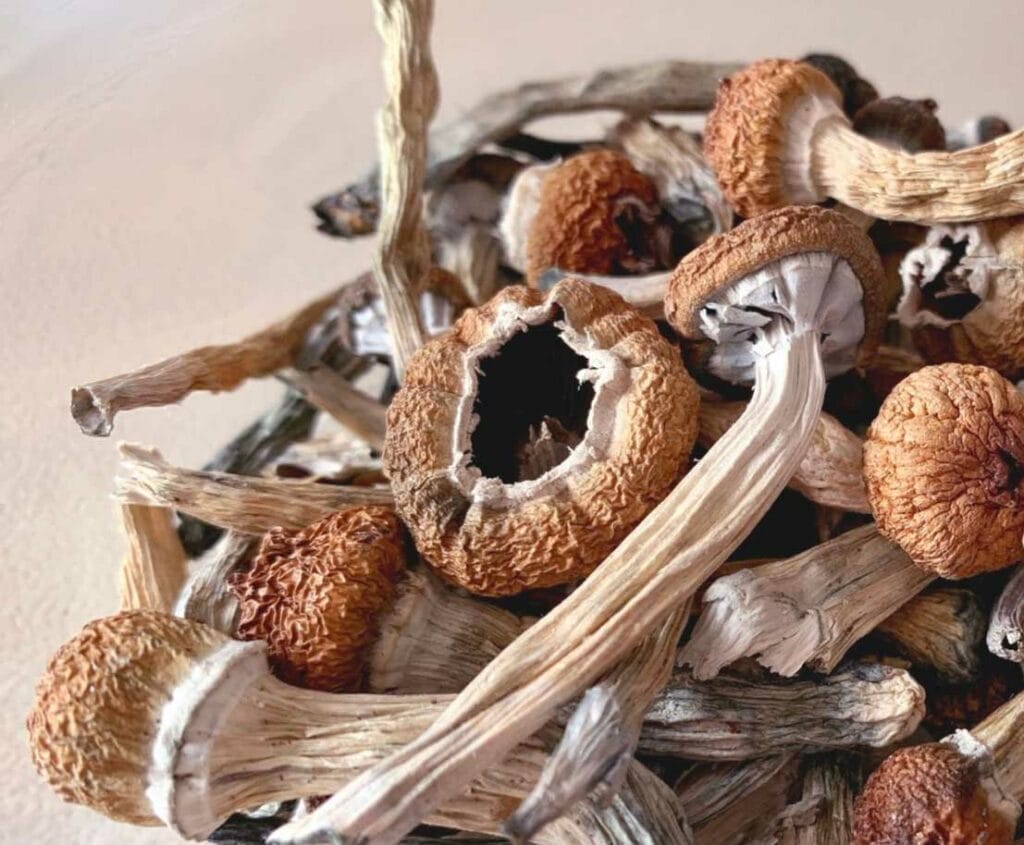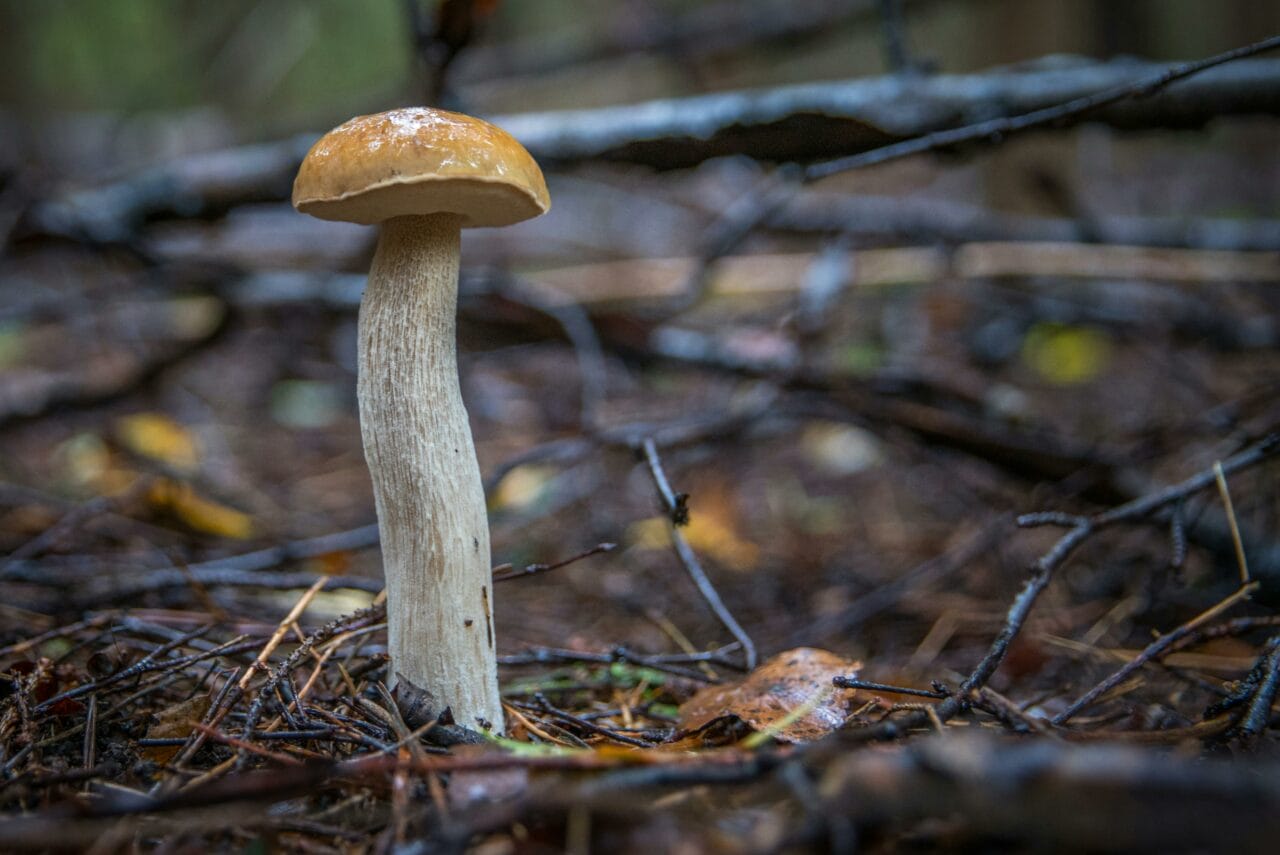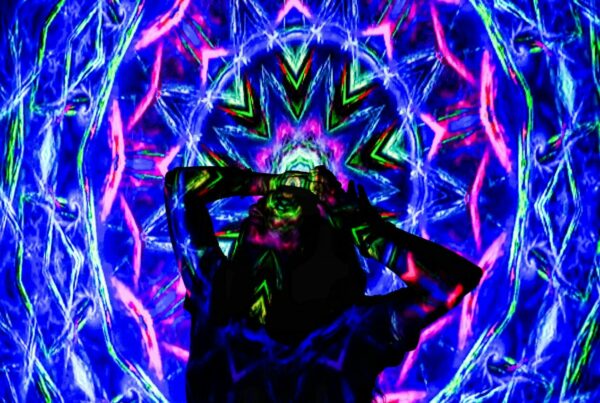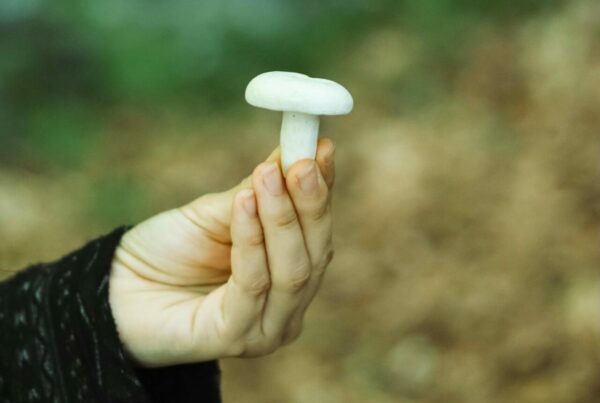As we continue to explore the impact of psilocybin on the human brain, researchers are continually uncovering extraordinary findings. A 2023 study by Washington University showed that psilocybin can reduce activity in the part of the brain responsible for memory and perception for over a week. This extended disruption may be associated with the mood-enhancing effects of the substance.
This recent breakthrough paves the way for patients with mental health conditions, expanding their treatment options. With the increased brain adaptability and mood-boosting effects, psilocybin could potentially offer more long-term relief than traditional drugs. Additionally, it’s economically viable with the option to purchase shrooms online.
[toc]
Key Takeaways:
- Desynchronization acts as a reset button, allowing individuals suffering from depression to establish healthier and more flexible neural connections.
- It aids in treating depression, anxiety, PTSD, and addiction by fostering neuroplasticity and modifying neural connections.
- Depression patients have reported that a single dose can enhance positive attitudes, mood, and behavior.
Decoding Magic Mushrooms
These fungi are famous for their psychoactive components, mainly psilocybin and psilocin, which can trigger altered states of consciousness. These alterations can lead to visual and auditory hallucinations, changes in perception, and intense emotional experiences.
For hundreds of years, they have been utilized in various cultural and spiritual traditions and are commonly known as “shrooms,” “mushies,” or “hongos.”
The Psychedelic Compound
The most intriguing aspect of these fungi is their psychedelic compound. When consumed, it converts into psilocin, which interacts with serotonin receptors (5-HT2A receptor). This interaction causes changes in brain connectivity and perception, leading to the hallucinogenic effect and potential therapeutic benefits.
This interaction disrupts normal connectivity, fostering enhanced communication between formerly disconnected brain regions, promoting new viewpoints and enhancing cognitive flexibility. Despite causing a brief period of altered consciousness, it enables deep insights that can be therapeutic for ailments such as depression, PTSD, and anxiety.
This substance has been the focus of numerous clinical trials and has even been acknowledged by Health Canada as a revolutionary treatment.
Recent Research on Brain Activity During and After Intake
The School of Medicine at Washington University conducted a study to investigate the immediate and enduring neurobiological and psychological effects of psilocybin. The research aimed to comprehend the influence of these substances on synaptic connections and the durability of this effect.
Methodology
Healthy young adults were given psilocybin and methylphenidate on separate days and underwent regular MRI scans (around 18 times) before, during, in-between, and after each dosage.
Functional MRI (fMRI) was employed to monitor synaptic connections and activity at various intervals. This allowed for a detailed assessment of immediate and long-term effects on brain networks.
While undergoing the scan, participants completed a simple auditory-visual matching task. They executed this task correctly during the drug sessions.
Key Findings
- Immediate Effects: A significant disruption in connectivity across cortical and subcortical networks was observed, with changes being over three times greater than those seen with methylphenidate.
- Desynchronization: A marked decrease in network synchronicity, particularly in the “default mode network,” was noted. This network, which encompasses interconnected regions like the thalamus, basal ganglia, cerebellum, and hippocampus, is typically more active during self-reflection and mind-wandering than when concentrating on specific tasks.
- Task Performance: Despite the observed alterations in functional connectivity, participants’ responses during the auditory-visual matching task remained consistent under the active substance. This implies that the changes in functional connectivity are not likely due to altered neurovascular coupling.
- Long-Term Effects: A sustained decrease in connectivity between the anterior hippocampus and DMN was noted for several weeks, but it normalized after 6 months.
- Methylphenidate induces immediate changes that are less significant and less
- Regarding brain connectivity, this occurrence is frequent.
Insights from Experts
Dr. Joshua Siegel, a distinguished psychiatrist from Washington University School of Medicine in St. Louis and the primary author of the study, proposes that psilocybin cultivates a more adaptable brain connectivity pattern.
Such enhancements in connectivity could potentially be beneficial in treating depression. By amplifying the brain’s adaptability, sustainable cognitive transformations could be enabled. This desynchronization could potentially act as a reset button for those suffering from mood disorders, fostering healthier and more dynamic brain connectivity.
Psilocybin’s Effect on the Brain
The active compound alters an individual’s perception of time and space and modifies their sense of connection with their environment. These subjective experiences, however, typically dissipate quickly.
It impacts cells that are responsive to serotonin, a crucial neurotransmitter. Temporarily activating receptors in dense regions, such as the medial frontal lobe, triggers enduring effects. This activation interrupts established pathways and stimulates the formation of new connections.
Desynchronization was diminished when participants performed a straightforward word-picture matching task, as the default mode network was inactive during this process. This might explain why minimizing external stimuli—like wearing eyeshades—can intensify engagement with the psychedelic experience.
Sustained Impact on Brain Disruption
Even though the immediate effects fade when the drug wears off, the aforementioned study found that disruptions in the connection between the DMN and the anterior hippocampus—a region associated with memory and emotion—can continue for several weeks.
This prolonged alteration could promote brain plasticity, possibly facilitating lasting changes in cognitive and emotional processing. These enduring experiences might enhance the therapeutic potential of the drug.
Dr. Petros Petridis, a psychiatrist at NYU Langone Center for Psychedelic Medicine, suggests, “Psilocybin could present an opportunity for transformation, which a therapist can guide the patient through.”
Potential Advantages for Mental Health Conditions
The influence may also encompass emotional processing, with alterations in the activity of brain regions implicated in emotion regulation. For example, it can affect the amygdala, an area responsible for processing emotions, which could lead to changes in emotional reactions and mood.
Such changes in emotional responses could potentially and happiness, and reduces depression symptoms.
- Depression: Positive attitudes, moods, and behaviours can be bolstered through drug sessions over two months, with a 14-month follow-up of moderate to high doses.
- Anxiety Disorders: Alleviation of anxiety, especially existential or end-of-life anxiety, may be possible by changing perceptions of self and reality. This transformation can promote better understanding and acceptance of personal fears.
- Post-Traumatic Stress Disorder (PTSD): It can enable a quick and enduring reduction in emotional responses to traumatic memories by enhancing fear extinction. It may also foster hippocampal neuroplasticity, thereby improving the brain’s adaptability and capacity to form new connections.
- Obsessive-Compulsive Disorder (OCD): It might reduce obsessive thoughts and compulsive behaviours by disrupting rigid neural pathways and promoting cognitive flexibility.
- Substance Use Disorders: It may help in fighting addiction by providing profound insights into the nature of addiction and encouraging a shift in perspective.
Why Choose Magic Mushrooms for Depression Relief?
Looking for mushroom products to alleviate depression? Our range of Psilocybe cubensis, known for its use in spiritual and religious rituals, offers reliable strains.
| Types of Dried Magic Mushrooms | Description | Effects |
| Blue Meanies | It has a smooth, 4 cm wide surface and is characterized by blue bruising, hence the name. | It induces joy, hallucinations, happiness, and intense laughter. |
| Golden Teacher | Famous for its spiritual or shamanistic effects, it’s a quintessential Psilocybe cubensis strain. | It leads to bright colours, intense emotions, visual distortion, and a feeling of lightness or giddiness. |
| Albino Zilla | Sturdy and thick, completely ghostly white with some dark bruising. | It stimulates creativity, provides a body buzz, encourages sociability, euphoria, and positivity. |
| Atlantic Treasure Coast | A natural product of the Southern Florida Gulf Coast, it features light caramel-coloured caps. | It enhances mood, induces pleasure, and reduces symptoms of depression. |
In addition to dried psilocybin-enriched mushrooms, magic mushrooms can also be consumed through edible shroom items, shroom tea, and various other forms. Explore these handy products available for purchase:
- Wonder – Birthday Cake Chocolate Bar
- Wonder – 3000mg Cherry Cola Gummies
- Bright Future – 3000mg Dark Chocolate & Sea Salt
Alleviate Your Anxiety, Depression and PTSD with Secure Online Shrooms
Recent research has deepened our understanding of how Psilocybe cubensis’s active compound affects the brain. The disruption that persists for a week can induce a temporary change in consciousness. This psychedelic journey can provide profound insights and offer benefits for conditions such as depression, PTSD, and anxiety.
Seeking a source to purchase shrooms online in Canada? Magic Mushrooms Calgary Canada is committed to enhancing mental health by providing superior quality magic mushrooms as a potential therapeutic aid for anxiety, depression, and PTSD. We strive to harness the unique attributes of these fungi with our carefully curated range of online magic mushrooms.
Frequently Asked Questions
Does combining Psilocybe with antidepressants enhance the effects?
At present, there is inadequate evidence to affirm a harmful interaction between antidepressants (SSRIs or others) and Psilocybes. The active compound also doesn’t increase the risk of serotonin syndrome when used with a single antidepressant. Most modern clinical studies involving shrooms require participants to gradually taper their SSRIs or leave them out of the study.
Can one microdose Psilocybe shrooms?
If you’d rather avoid the full psychedelic effects of dried shrooms, microdosing is a viable option.
- Procure and Prepare: Obtain mushrooms and grind them into a fine dust.
- Determine Dosage: Approximately measure out 0.1 to 0.3 grams (100-300 mg) of dried mushrooms.
- Set a Dosing Regime: Adopt a consistent schedule, such as taking the dose every three days or adhering to a two-day-on, one-day-off regime.
- Weigh and Consume: Use a high-precision scale for accurate measurements and consider dosing on an empty stomach for better absorption.
- Monitor and Adjust: Keep a log of your experiences and adjust the dosage or schedule based on your personal observations.
Is it safe to buy magic mushrooms online for therapeutic purposes?
Buying online is generally safer than procuring from questionable sources.
- Review detailed information about the products, including their source and quality. Reliable sellers offer lab test results or other forms of assurance to verify the authenticity and purity of their psychedelic mushrooms.
- Your payments and personal details are protected with website encryption that secures your private and financial data.
- To prevent ingesting harmful varieties, only purchase from credible sources. Verify customer reviews and interact with the dispensary to ensure their legitimacy.
Articles That Might Interest You:





